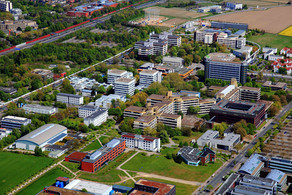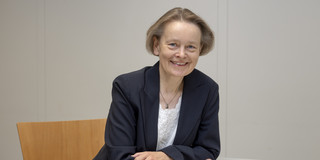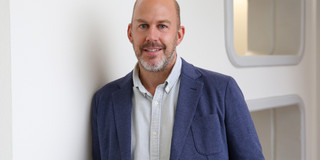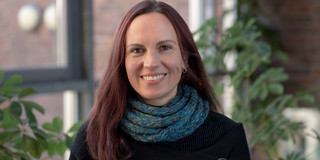"I Have Only Had Good Experiences with the Program So Far"
- Artificial Intelligence
- Top News
- Research
- Series & Dossiers

Mr. Ramosaj, what do you deal with in your research?
In statistics, the selection of "important" variables plays a central role, since many fields of research now work with high-dimensional data - in other words, with data containing a very large number of variables. In medicine, for example, people are trying to correlate the occurrence of diseases such as breast cancer with the expression of certain gene regions. However, such genetic data sets are enormously complex and almost impossible to evaluate manually - which is why AI is used to select relevant variables particularly effectively. However, this leads to another challenge: AI algorithms are not modeled theoretically, but trained for specific tasks according to a "trial and error" principle. Thus, although they work well in practice, they are a kind of "black box" - we only see the result, but not the way to get there. Thus, there is no certainty that an AI algorithm will do "the right thing" in a given scenario. Therefore, in my research, I not only work with AI, but also use statistical methods to make AI itself more transparent. With sound theoretical foundations about how it works, it would be easier in the future to define scenarios in which a particular algorithm is guaranteed to do what it is supposed to do.
How did you become part of the AI Trailblazer Program?
The AI Trailblazer Program is intended to make it easier for young researchers to start an academic career. My doctoral supervisor, Prof. Markus Pauly, pointed this out to me, and he also provided me with comprehensive support during the application process. When I saw the requirements of the program, it was clear to me that it was a good fit for me. I also knew roughly what topic I wanted to research, so I set about submitting the application. First, you submit an outline, but even at this stage it is very important to have as concrete a plan and structure as possible. If you get positive feedback, you are then invited to give a short presentation. My overall experience with the program has been very good, both during the application process and now in the current project.
What tips would you give to future applicants who want to become AI Trailblazers?
I would invest a lot of time in the formal application - the more precisely you present the individual focal points and steps, the clearer it will be to the reviewers what the planned course of the research project looks like. For the presentation, it certainly doesn't hurt to practice the talk beforehand and to appear confident. Some of the questions asked were quite detailed and technical - you have to be prepared for that. In addition, international networking is an important evaluation criterion. After all, the goal of the program is also to support NRW as a location for AI research. If you can already demonstrate concrete networks and collaborations with renowned international researchers, that definitely helps. In addition to my doctoral advisor, I also received support from the research funding department, both in editing the application and in rehearsing the presentation.
Personal details
- 2014-2017 Master of Science in Mathematics and Management at the University of Ulm.
- 2015-2016 Master of Science in Mathematics at Syracuse University, New York, USA.
- 2017-2020 PhD in Statistics at the TU Dortmund University, Germany
- 2020 Dissertation Award of the Faculty of Statistics, TU Dortmund University
- since 2020 Postdoctoral Researcher at the Faculty of Statistics, TU Dortmund University
- Since 2020 Funding as an AI Trailblazer by the Ministry of Culture and Science NRW.
Further information:
- AI Trailblazer Program of the Ministry of Culture and Science NRW, implemented by Projektträger Jülich.
- Third-party funding advice from the research funding department of TU Dortmund University
- Federal funding database with current calls for proposals and framework programs
All interviews in the Spotlight Research series: To the overview






